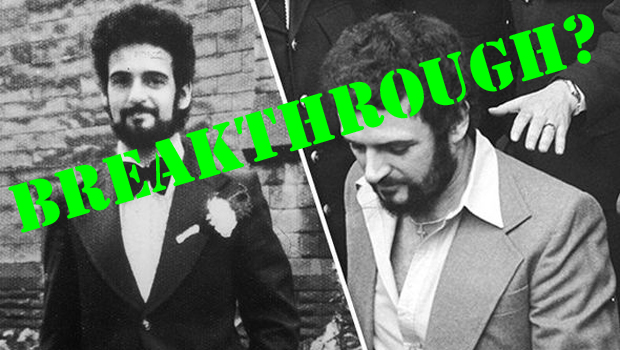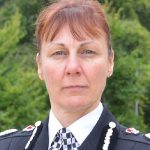“Hope”: New Evidence
by Chris Clark and Tim Hicks
~~~~~
1. Introduction: “Hope”
For some time, the NYE has been covering “Yorkshire Ripper” Peter Sutcliffe and his potential involvement in many more murders than those for which he was convicted.
NYE articles on Sutcliffe here, here, here and here. NYE article on the Harrogate attack on the 18th of February 1989, which Sutcliffe was questioned about by NYP here.
When the authors started publishing Chris’s antecedent investigation into Sutcliffe, they were hopeful they would be able to progress one of the great murder mysteries of Yorkshire, “The Nude in the Nettles” murder. They assessed that it had probably been perpetrated by Sutcliffe, that the original investigation had been poor and had failed because it prematurely focussed on false lines of enquiry. There had also been a senior officer failure to review the case impartially.
The objectives of the authors’ investigation are:
1). To try and identify the woman known as the “Nude in the Nettles”, so her next of kin can be notified and she can have a memorial service in her own name.
2). To try and obtain justice for her even at this late stage by identifying her killer.
To assist in the investigation and help generate public interest the authors are provisionally giving the victim the name “Hope”.
The authors always felt the case was one witness away from a resolution. As Tim wrote to Chief Constable Winward on the 11th of May 2019 “I believe this murder is still solvable”.
Tim and Nigel always felt that as a local media outlet, the NYE was best placed to provide the local media coverage that would generate local interest and produce information. For this reason, the NYE always ran a very detailed appeal for witnesses with each article. This has now borne fruit and a key witness has come forward to with credible evidence, which the authors have been able to develop.
As a result of the new witness evidence that the NYE has developed, we have updated the appeal for information and a revised targeted appeal is at the end of the article.
PLEASE REVIEW THE UPDATED APPEAL BELOW
AND CONSIDER IF THERE IS ANY INFORMATION YOU CAN ADD.
ALL INFORMATION RECEIVED WILL BE TREATED IN STRICTEST CONFIDENCE.
2. Background (regular readers will be familiar with this)
On Friday the 28th of August 1981, North Yorkshire Police (NYP) officers from Thirsk responded to an anonymous telephone call and discovered the decomposing body of a woman at Sutton Bank just off the A170 on the North York Moors.
Despite determined and relentless efforts, NYP have not been able to identify her. An appeal for information was made by NYP in 2011 as part of a cold case review gives the facts of the case as follows:
“An anonymous male caller telephoned North Yorkshire Police providing the exact location for police officers to search. On Friday 28th August 1981 Police officers attended the described location, a lay by on the unclassified road leading from Sutton Bank to the villages of Scawton and Rievaulx. The location is a quiet road used by local people and occasional caravaners heading to a nearby site. The rural area consists mainly of arable and pasture farmland with occasional conifer plantations. It was to the side of this road and between two small plantations that officers found the skeletal remains of an unknown female laid in undergrowth. This discovery marked the start of an 18 month police investigation led by Detective Chief Superintendent Strickland Maunsel Carter to establisher her identity and why she was there.
A forensic examination of the naked body revealed no jewellery or personal effects laid nearby that may assist in establishing who she was. A Home Office pathologist estimated she may have laid at that place situ for up to two years due to plant growth and state of the body. The post mortem did not establish a cause of death.
What could be established was that body was that of a female, 5’ 2” in height, aged between thirty five and forty and may have been a mother. The deceased appeared to have short dark coloured hair. There was evidence of an old fracture to the right ankle but nothing conclusive to provide an identification.
During the 18 month police investigation extensive enquires were conducted and a number of people were identified as possible matches for the deceased but none could be positively identified as the deceased.
A line of enquiry reported on at the time related to a female prisoner that had escaped from Askham Grange open prison almost two years earlier but has not been seen since or spoken to by police.
Thirty years later the same questions remain. The anonymous male caller that started this 30 years police investigation may have the answer to the other questions – who is this lady left undiscovered at the top of Sutton Bank?, what was she doing there? and how did she die.
The thirty years that have elapsed since the discovery of this lady has seen significant developments in police technology that are used in current police investigations, and possibly viewed as normal enquiries.
At the time a three-dimensional wax reconstruction of her head, which was first such reconstruction, indicated the investigators were keen to use new technology. It was a positive actions as the circulations of this image generated significant interest and possible identities but these failed to provide the identification required.
We need to recognise that at the time of her discovery the Police National Computer that holds vehicle and person details was in its infancy, The Automatic Number Plate Recognition (ANPR) had not been invented and the first mobile telephone call to be made in the UK would not take place for another three and half years.
Although the passage of time has changed police technology, North Yorkshire Police’s commitment to finding the answers to these questions remains the same, so that her family can have the answers they deserve. For this reason if you know the identity of the lady or the male caller please make contact.”
This appeal was closely coordinated with the local media, who were commendably supportive of police efforts to try and resolve the case. Article by Jennifer Bell of York Press here. The article obviously had police input and revealed additional information to that disclosed above. Four passages from the article are very relevant:
- “The caller said: Near Scawton Moor House you will find a decomposed body among the willow herbs”.
- “It was a yoghurt top, discovered beneath the body, which gave police a vital timeline of clue of how long she had lain there –about two years”.
- “The position of the body suggests someone was in a hurry to dump her”.
- “Another popular theory was that the woman was a prostitute. But whoever she was police are convinced to this day that the cause of death was unnatural.”.
3. Failure of the original investigation
There was a major investigation by NYP which essentially fell into six phases from the discovery of the body in 1981 to the present. The authors reviewed the investigation and believe serious errors were made in each phase and these are documented in the NYE article here. In this article the authors indicate the identity of the prime suspect, the mystery caller.
Despite all of the police effort and manpower expended on this case over the years, there were only five successes in the 1981 and 2011/2012 investigations. These were:
1). The autopsy could not identify the date or cause of death, but analysis of the plant growth confirmed that there had been two seasons of plant growth since the body was dumped, putting the date of deposition at 1979.
2). The 1981 investigation suspected that the victim may have been a prostitute. However, the authors suspect this may have eliminated Scarborough and the A170 from the geographical assessment, because it did not have a red light district.
3). The 1981 investigation identified one witness who confirmed that when he visited the deposition site in 1979, he noticed a foul smell, which the police concluded was from the body decomposing.
4). The 1981 investigation obtained the facial reconstruction shown above in the lead illustration above.
5). The 2012 investigation exhumed the body and obtained DNA evidence.
4. Enter Nigel. The NYE investigation develops fresh evidence
Nigel Ward is one of the NYE’s local men on the ground. He is a very affable, calm, principled and approachable character, well-connected and well-respected locally. So Chris and Tim were not surprised when following several appeals for information, a witness contacted Nigel with an identification of the victim.
They were however staggered by the quality and detail of his evidence and the impact it – and the NYE follow-up – have had on this case.
The NYE has now sourced evidence from four witnesses which we believe is completely unknown to the police:
Witness 1
Witness 1 is former Councillor Norman Murphy, who is a long term Scarborough resident with an encyclopaedic knowledge of events in the area. In Nigel’s opinion Norman is a responsible person of impeccable moral character with an impressive record of service locally as a Councillor for twenty years. He is a very credible witness.

Norman Murphy – a highly credible witness
In summary from e mails and conversations, Norman’s evidence is as follows:
“I owned the shop Murphyvacs 190/192 Victoria Road Scarborough YO11 1SX. My business was repairing, selling and refurbishing vacuum cleaners. Attached to the side wall of my shop is a Victorian shelter which is large enough to accommodate about 8 people. This shelter became a refuge for several alcoholics and drug addicts and they would habitually congregate in the shelter to drink and be out of the bad weather.

Norman’s shop and the shelter in Victoria Road, Scarborough
When I opened my shop in October 1975 the cafe opposite was owned by a guy called David Siddle. The cafe had no name as far as I can remember. The cafe is directly opposite my shop and is the window with the white blinds to the right of the yellow logo. Interestingly, the window with the yellow logo was a taxi office and still is. Drivers used the cafe and were in and out all the time. Not far from the cafe was the driving test centre for Scarborough and the instructors used the cafe all the time when their pupils were taking their tests.

The café
Dave Siddle sold the café in, I think, about 1977. In about 1978/9 I think Iris Scott bought the cafe. So if memory is correct the period I am referring to must have been from 1978 till Sutcliffe was caught in 1981.
I would go to the café each morning for a cup of tea. It was very convenient as I could watch the shop from the seat in the window. From time to time a tall dark haired man with a neatly-trimmed beard and moustache and a strong Yorkshire accent would come to the café and have something to eat and chat to the café owner Iris Scott. I am sure he was not a local. I think it may have been Sutcliffe. He told Iris that he was a wagon driver and as at that time there were loads of small engineering firms in the area, and other commercial businesses his arrival at the café was perfectly logical as he could park up and walk to the café.
When the Ripper was caught and his picture was all over the media, Iris was convinced that the same tall dark-haired man who had eaten at the café was the Ripper. And maintained this view until the day she died, often repeating the claim.
With regard to the woman whose artist’s impression featured in the NYE article, the connection is this: As I recall, she was one of the people who used to drink in the shelter. I remember her as she was small and would have been about 40 at the time.
As I recall it she usually wore a kind of quilted bodywarmer, winter or summer. It was dark blue, I think. Underneath she would usually wear a blouse or jumper. She usually wore dark coloured mini skirts or if not mini, quite short. She was small, stocky – but not fat. Dark brown frizzy hair, very similar to the drawing.
I believe she might have been selling herself when she was in Scarborough, hence the very short mini-skirts years too young for her. Accent, as I recall, was Yorkshire or Lancashire. I don’t think she was local to Scarborough, but I am not sure why I think that. I think she may have smoked.
Also the drinking gang were always fighting and one day when she came in she had been beaten up and had some of her teeth knocked out. I have no idea of medical history or where she received treatment, if any.
Not sure where any of them lived or slept I would think they all had bouts of homelessness and the Salvation Army HQ is not far from my shop so would not be surprised if they/she did not have contact with them.
I would say it was inevitable that they were all known to the police. They were habitual drinkers, probably drug-users as well, although I can’t say I ever saw them take drugs. The shelter next to my shop was a regular haunt for them and well known to the police, who had to drive right by it to get to our police station.
Suddenly this group all disappeared. It was a bit strange and might be coincidental. I, of course, thought nothing of it at the time.
I don’t remember any police investigation into the “Nude in the Nettles” murder or this woman. I would still not have thought anything of it but for the article in the NYE jogging my memory.
No idea where Sutcliffe’s lorry might have been parked, but in those days it was a lot easier to park up my end of town. Also there were several places he could have been delivering to so he might have used their premises I suppose he could have been being loaded so might have gone for a cuppa while he was loaded up.
There were a lot of engineering firms around my end of town in those days. In Roscoe Street alone there was Andrews of Scarborough (motorcycle dealers), Deardens builders merchants, North Sea Winches (they did work relating to marine engineering but also did a lot of welding work), D Wray and Sons was a bakery but they had their vehicle workshop in Roscoe St, Scarborough Ignition Co Ltd (automobile electrical engineers) then there was Pickups (a really big engineering firm – this firm still exists and is now situated on our trading estate). Pickups had deliveries every day and as Roscoe St is not very wide there deliveries were resented by the residents in the area. However, the old goods yard was quite busy in those days; it is now our Sainsburys. As an aside many of the people who worked at these firms used Iris’s cafe so if they had Suttcliffe deliver to them they would have almost certainly either taken him, or directed him to the cafe.”
Norman has seen a draft of this article and also provided e mails and a statement to the NYE supporting these comments.
Witness 2
Witness 2 is Iris Scott, who is now sadly deceased, as is her husband. Her evidence at the time, as related to the NYE by Norman and specified above, was that Peter Sutcliffe had been a regular patron of her café.
Witness 3
Witness 3 was traced by Chris as part of our effort to verify Norman’s evidence. He is a friend of Mr and Mrs Scott who has perfectly confirmed Norman’s account that Iris Scott was definite she had seen Peter Sutcliffe in her café on multiple occasions:
“Yes, top end, next to Boro taxis. She was our neighbour for a while at Newby. I remember Iris saying she was convinced Peter Sutcliffe had been in her café. Sadly, after retirement both Iris and her husband Bill passed away”.
Witness 4
Witness 4 was not directly involved in these events. His information relates to the mystery caller. However, the authors are not prepared to release anything more, for reasons of national security.
In summary, this new evidence addresses three separate lines of enquiry.
- Confirmation that Peter Sutcliffe was a frequent visitor to Scarborough
Norman’s evidence is confirmed by:
- A second contemporaneous witness identification by the now deceased café owner Iris Scott: Based on the photographs issued at the time of Sutcliffe’s arrest and trial, she recognised Sutcliffe and stated that he used her café regularly. Her evidence at the time and Norman’s is verified by Witness 3.
- Sutcliffe’s description, accent and occupation all fit with Norman’s evidence.
- The NYE has alleged that Sutcliffe’s occupation as a lorry driver brought him to Scarborough. Norman’s evidence verifies this and that he probably delivered/collected from the railway goods yard and light engineering businesses in the area.
- Because “Hope” was a prostitute it was easy to entice her into his vehicle and drive off with her for an assignation. This fits perfectly with Sutcliffe’s modus operandi.
- The timeline Norman describes fits with Sutcliffe’s access to North Yorkshire. He passed his HGV test in September 1975 and obtained employment as a lorry driver, but was dismissed for theft in March 1976. Then in October 1976, he found a job as an HGV driver for T.& W.H. Clark (Holdings) Ltd based in the Canal Road area of Bradford. Sutcliffe knew North Yorkshire well from his delivery driving. The authors believe he had been operating in North Yorkshire undetected since possibly February 1975 when he started his HGV training in Harrogate. Certainly since the Harrogate attack in February 1979 -the same year as “Hope’s” murder.
- The activity Norman describes fits with Sutcliffe’s access to Scarborough. T & WH Clark was an Engineering firm. Sutcliffe worked for them as a driver, he would have been delivering and possibly collecting engineering goods from customers, suppliers and other engineering firms. Sutcliffe drove a Ford Transcontinental lorry.
- Victim identification and identification of the abduction point
Norman’s identification of the woman as the victim is supported by:
- The victim’s autopsy confirmed Norman’s account that the victim smoked, had missing teeth and did not look after herself. The age is also correct. The victim’s hair survived and is the most accurate part of the reconstruction. Hence the reason why Norman particularly recognised it.
- The original police investigation deduced she may have been a prostitute.
There being no red-light district in Scarborough, this explains how Sutcliffe may have encountered her. The authors believe that a man of his experience will have recognised from her immodest dress that she was a prostitute, propositioned her and enticed her into his lorry on the basis of going to a secluded location for sex. If “Hope” is the woman that Norman describes, the café and the area around the shelter was the abduction point for the victim.
- The mystery caller
The mystery caller was designated as the prime suspect in 1981 and remains so to this day.
“Hope’s” body was very effectively and successfully concealed. Witness 4 has provided a rational explanation for why the mystery caller did not come forward, how the body was discovered and why the mystery caller should be eliminated as a suspect. Tim believes this will be enough to eliminate the mystery caller.
Norman’s evidence coupled with the evidence of Witness 4 must now indicate that Peter Sutcliffe should be the prime suspect.
- Selection of the deposition site
The body was very effectively concealed. The authors believe that the yoghurt top was a decoy left there afterwards to give a false date and establish an alibi.
If it was Sutcliffe, why should he take the time to do this and then take the risk of returning to plant a yoghurt top with a false date under the body? Why not just leave the body where it fell?
Well, Sutcliffe was in Scarborough driving his TW Clark lorry. The delivery records of TW Clark recorded when he was in Scarborough, so if the body was found the next day in Scarborough, there would be a record tying Sutcliffe and his lorry to Scarborough on the day of the murder. Something Sutcliffe wanted to avoid.
This would explain the distance the victim was transported away from Scarborough and the return to plant a decoy. Thereby dating the murder to a period that Sutcliffe had not been in Scarborough and establishing a false alibi.
- Independence of the evidence
These three points are not mutually interdependent. They are valid in isolation.
So if indeed the woman Norman saw is not “Hope”, this does not change the fact that there is now additional evidence that Sutcliffe operated in Scarborough. The A170 route to/from Scarborough and Thirsk goes past the deposition site at Sutton Bank. So “Hope” could still be:
- A woman picked up in Scarborough or who Sutcliffe met at the café, who wanted a lift to Bradford or to the A19 to hitch hike North or South.
- A hitchhiker picked up on the A19 or A170.
- NYE Appeal for information
“Hope”:

Three-dimensional wax reconstruction of the victims head and face
- She was 5’ 2” in height, aged between thirty-five and forty.
- She had a slender build and wore her natural dark brown hair in a page-boy style.
- She had given birth to two or three children and had a displaced septum between her nostrils.
- Her toenails were painted pink – the varnish coming from the Max Factor Maxi range.
- She would have worn a size four shoe.
- Staining on her teeth revealed that she was a heavy smoker that did not look after herself.
- She had a Yorkshire or Lancashire accent, but may not be originally from Scarborough.
- All her upper teeth were missing, she had an upper dental plate fitted, and she had only six lower teeth.
- She had an old fracture to her right ankle and an abnormality to her neck vertebrae which would have caused backache.
- Do you remember someone like this from the shelter in Victoria Street?
- Were you one of “Hope’s” clients?
- Were you a police officer in Scarborough in the period 1977 – 1979? Did “Hope” come into custody for being drunk and disorderly, soliciting or vagrancy, or did you see her at the shelter?
- Were you a social worker, health care professional, or member of the Salvation Army that came into contact with “Hope” and other down and outs from Victoria Road Scarborough?
- Did you find a dark blue quilted body warmer, blouse, jumper, dark mini skirt discarded along on the A170?
Peter Sutcliffe:

Peter Sutcliffe pictured in his TW Clark lorry circa 1976
- Did you see Peter Sutcliffe (Image at beginning of the article) or a lorry from TW Clarke (image above) in Scarborough or any of the locations mentioned in the article?
- Did you work at Victoria Road, Roscoe Street, Andrews of Scarborough (motorcycle dealers), Deardens builders merchants, North Sea Winches, D Wray and Sons, Scarborough Ignition Co Ltd, or Pickups or the old goods yard which is now Sainsburys?
- Were you a taxi driver for Boro Taxis next to the café, or did you use taxi’s from there?
- Did you frequent the café in Victoria Road and see Peter Sutcliffe there?
- Did you know the café owner Iris Scott?
If you have any information on the “Nude in the Nettles” mystery that you want to pass on confidentially, you can talk to a journalist by contacting the North Yorks Enquirer using our letters@nyenquirer.uk address. All responses will be treated in the strictest confidence.
- NYP Media Policy and the investigation going forward
This is a classic case of media exposure producing useful information for a cold case. The sad thing is that this did not arise from close cooperation between the police and journalists. Chief Constable Winward refuses to work with the NYE. The e mail below and others were all ignored.
From: Timothy Hicks
Sent: 11 May 2019 08:14
To: Office of the Chief Constable (OfficeoftheChiefConstable@northyorkshire.pnn.police.uk)
Subject: Nude in the Nettles murder
Dear Chief Constable Winward,
NUDE IN THE NETTLES MURDER
As you are aware, I have been running a series of articles on the “Nude in the nettles” murder.
https://nyenquirer.uk/nude-in-the-nettles-was-it-sutcliffe/
I believe I am in a position to make a credible suggestion as to the probable identity of the mystery caller that first alerted your force to the location of the body in August 1981. I believe this man remains the prime suspect in the case, although I think this is a major error in the original investigation.
I am of the opinion that this murder may still be solvable. As a start point I would like to ask that you authorise an independent review of the case and the original investigation, by a senior detective from another force, preferably the Metropolitan Police. My hope is to have the case re-opened and have a major publicity effort on the anniversary of the discovery of the body in August. The last burst of publicity was in 2012 when the victim’s DNA profile was extracted.
As you are aware, I live in Luxembourg, but I will be in the UK in June. I would be prepared to attend a meeting at a police station in England or Wales – provided it was by a main line railway station – or to have a video conference on a secure link from the British Embassy in Luxembourg to discuss the case.
I look forward to hearing from you in due course.
Yours sincerely,
Timothy Hicks
No response was received from NYP as to what evidence it had developed. This information remains unexploited as a result of Chief Constable Winward’s media policy.
This breakthrough occurred because a retired police officer forged close relations with a local internet media outlet and worked with it over the course of a year to prosecute a media strategy that produced progress on a cold case.
Chris writes:
“When I teamed up with Tim to work on antecedent investigations into Peter Sutcliffe and Christopher Halliwell, the fact that the NYE was based in the Scarborough and Whitby area was not a factor in selecting it to publish in. I had not covered the “Nude in the Nettles” murder in my book “Yorkshire Ripper The Secret Murders”, because although I believed Sutcliffe was responsible, it was assessed at the time that there wasn’t enough evidence to include it in the book.
It is therefore a fortuitous coincidence that the “Nude in the Nettles” murder occurred in the NYE’s primary readership area. Because of the NYE team’s local knowledge, standing and connections to the community, we have been able to work together and develop further evidence. As a result, we can probably eliminate the “mystery caller” as the prime suspect, possibly identify the victim, but certainly identify “Yorkshire Ripper” Peter Sutcliffe as a very strong suspect. This is very significant progress in a very short time, for a case that is forty years old.
Although Peter Sutcliffe did not use his firm’s lorry in any of the canonical cases that he was convicted for, my research identifies a number of unsolved cases where indeed he used the lorry to place him in the area of the murder which bear his hallmarks.”
Tim writes;
“The best form of media outlet for police appeals for information is local media. This is because the reporters have local knowledge, local connections and a wider local media footprint in terms of readership.
The journalists are often known to the public who are much more comfortable dealing with a local reporter, visiting a local office, or writing in to a local media organisation, rather than dealing with national outlets. For witnesses who are wary of coming forward to the police, a local media organisation offers the opportunity of talking with a journalist in complete confidence, not the police.
Normally a detective will cultivate any source of information to progress a case, even using known criminals. In this case, NYP will not cooperate with the NYE, even if this means failing to investigate all lines of enquiry in a murder. This is to be covered in a forthcoming article, but I believe this is because of the success the NYE has had in exposing things that NYP would prefer remained hidden. The way the “Nude in the Nettles” investigation was bungled is a classic example, along with the Peter Jaconelli scandal and Chief Police Officers expenses.
It is obviously deeply concerning that under the leadership of Chief Constable Winward, NYP will not cooperate with local community journalists and internet media outlets to investigate crime. Particularly as this is a case involving a serious crime that her force (the largest county force in the UK) with all of the resources available to it has failed to progress; whilst an impartial investigation and a series of appeals and articles by a retired policeman working closely with a local media outlet, has led to additional information and major progress.
This shows the importance for the police of following an effective and cooperative media strategy. It also demonstrates why it is so important that North Yorkshire Police is subjected to impartial media scrutiny and challenge, by a free press.
The fact that North Yorkshire Police is ignoring information in a murder enquiry, has essentially forced the authors to go it alone, without the police – as we were forced to do with the Peter Jaconelli investigation.”













